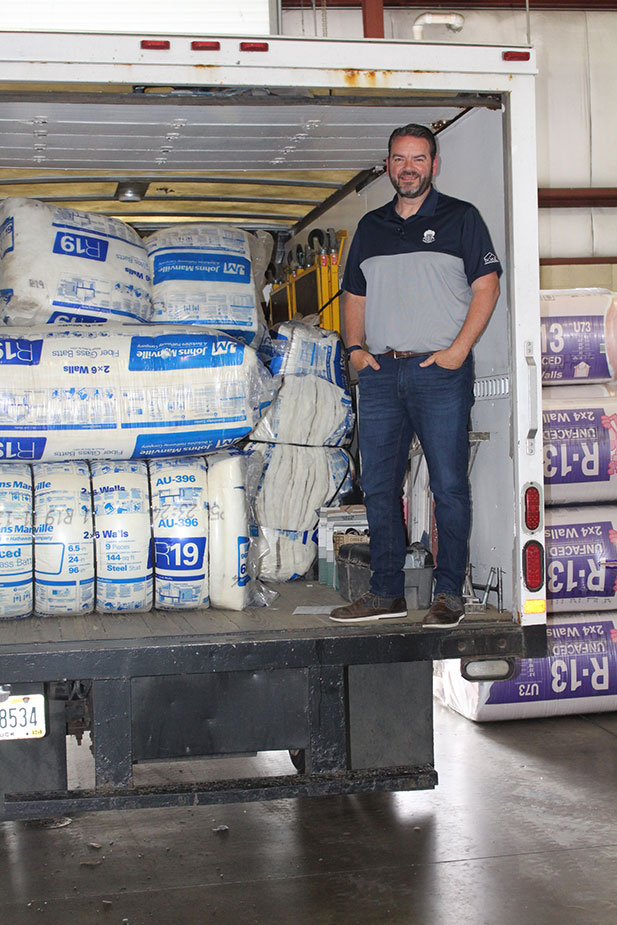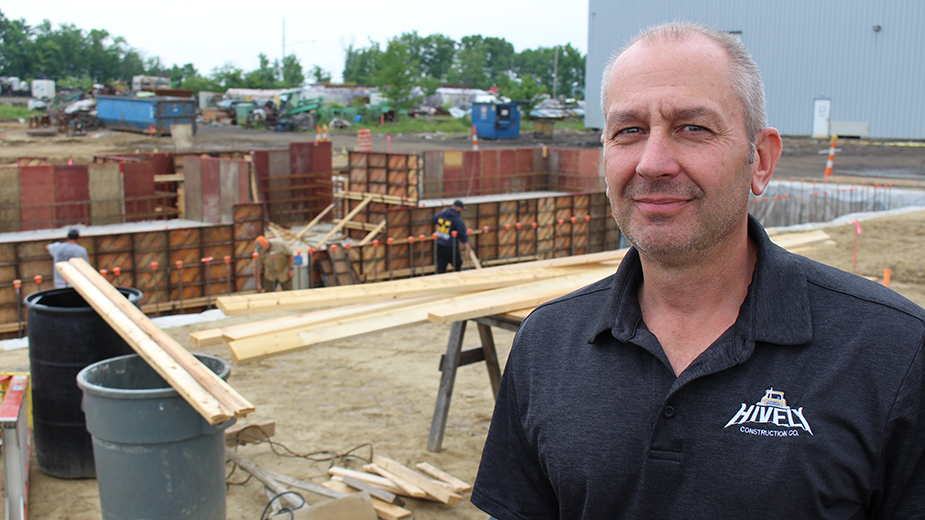YOUNGSTOWN, Ohio – After the challenges of the past year, 2021 should be a “pretty decent year” for Hively Construction Co. Inc., says Ryan Hively, vice president.
Compared to a typical year, work is still down slightly for the Canfield-based contractor as some companies shelved projects because of the pandemic, he says. Manufacturing and public projects have helped to balance that out.
“There wasn’t much of a downturn from our vantage point because of what we did pick up,” Hively says. “But if there was no pandemic, the volume would be up more.”
About half of Hively Construction’s projects are in the manufacturing sector. “I expect that to increase this next year,” Hively says.
Many projects are for customers who “need to increase their capacity to keep up with demand” coming out of the pandemic, he says. Projects range from small plant additions to larger facilities – 80,000 to 100,000 square feet – that are expanding storage space.
One such project is a 50,000-square-foot addition to the manufacturing space at Extreme Machine and Fab in Hermitage, Pa., Hively says.
Throughout the region, work among contractors is a mixed bag, says Kevin Reilly, executive vice president of The Builders Association of Eastern Ohio and Western Pennsylvania. Some have a decent amount of work, while others are light.
“No contractor has all the work they want,” Reilly says.
Still, Reilly is optimistic, citing the Excellence Training Center project at Youngstown State University and the orthopedic center that Southwoods Health plans to build in Boardman.
“Real big work,” such as construction of the $2.3 billion Ultium Cells LLC electric-vehicle battery cells plant in Lordstown, is drawing a lot of manpower, he notes.
The good thing about this project is that Barton Malow, the Michigan-based general contractor, is using local workforce, “as well as, to a certain degree, local contractors, which is great to see,” Reilly says.
“These projects out there, they’re not short-duration projects,” he continues. “They’ll take months and some will last into years.”
Among the members of The Builders, construction man-hours are up 19% year-over-year for the period Jan. 1 to May 31, Reilly reports. Compared with the same period in 2019, man-hours are up 13%.
Coming out of the pandemic, some contractors were “aggressive to build up a backlog” and bid competitively, while others chose to hang back and pick up projects later in the year, Reilly says.
Now, with materials shortages and price increases, he advises contractors to be cautious.
“If I bid a project and that price of material goes up 20%, that can have an impact,” he says.
Some contractors have stocked up on materials to avoid such an impact.
Shortages have extended lead times on orders to as long as four months, up from the typical two to four weeks, says Chris White, vice president of operations at Boak & Sons Inc., Austintown.

As the shortages started to hit, the commercial and residential roofing contractor stocked its insulation and roofing material inventory “to stay ahead of the game,” White says.
“It’s a very fluid situation right now. It’s consistently changing,” he says. “Everything could change at any moment.”
With gas prices up, that adds gas surcharges and delivery charges to the overall cost of construction projects, says Paul Johnson, owner of Adolph Johnson & Son Co., Mineral Ridge.
The family business was founded in 1918; Johnson, the third generation, has operated it 43 years. Johnson says he’s seen similar situations. “But this one seems to be a little wackier,” particularly with steel joists and ducting.
“They’re nuts,” he says. “They’re telling me if you order them today, you won’t get them until March of next year.”
While the extended lead times haven’t had a dramatic effect on customers green-lighting projects, Johnson expects some may delay construction until the price of materials becomes more reasonable.
Last year, work was down about 40% at Adolph Johnson & Son, although 2021 is about on par with a typical year “or slightly busier,” he says. The industrial sector is strong and retail accounts for about 70% of the contractor’s work this year, including a 10,000-square-foot drugstore it’s constructing off Interstate 79 in New Castle, Pa.
For Lee Michael Industries Inc. in New Castle, work in the manufacturing sector is about 50% slower compared to previous years and the company is looking at about 25% fewer builds, says Mark Shenker, project planner.
However, he expects a “good amount of business” with the upcoming plant shutdown season. That’s when manufacturing customers halt production so Lee Michael Industries can go inside their plants for renovation work and ensure everything is up to code.
“During the last week of July, we do a bunch of work when the employees aren’t there,” Shenker says.
In Columbiana, C. Tucker Cope & Associates has “a decent workload and a very good backlog,” says Joel Brezina, business development director. But with the rising prices of materials, she foresees construction slowing a bit.
“We don’t see this going away anytime soon,” Brezina says of the price hikes.
Like Boak & Sons, C. Tucker Cope buys in bulk, particularly miscellaneous construction materials such as rebar. The company deals with pre-engineered metal buildings, which are built to order, Brezina says. So it can’t really increase its inventory in that regard.
However, if more material needs to be added when a project is underway, “We have our own yard that’s stocked with material. We’re able to keep the project moving with no stop in construction,” Brezina says.
Workforce remains a serious issue for all construction contractors.
To recruit young people into the skilled trades, in September 2019 The Builders Association organized the Mahoning Valley Skilled Trades Expo in partnership with area trade unions and county Educational Service Centers.
After being forced to cancel an expo scheduled in 2020 because of the pandemic, the event returns this year for two days, Sept. 22-23, at the Canfield Fairgrounds. New this year are evening hours, 3 to 6 p.m. on Sept. 22, where adults can tour the expo and see what career paths are available to them and their children.
While the annual event is a good long-term solution because it engages students, Reilly hopes the evening hours will address immediate needs.
“We recognize that we have some short-term issues that we need to address,” he says. “We definitely want to bring people into the industry.”
All members of The Builders are union contractors and can draw manpower from outside the area when needed.
“But the goal is to get Mahoning Valley and Shenango Valley residents in the industry,” Reilly says.
Apprenticeship programs generally run three to five years, depending on the trade. But participants don’t have to wait that long to earn a paycheck, Reilly says. The “earn while you learn” concept has first-year apprentices making about $15 per hour.
For the most part, contractors are retaining their current workforce and also accepting job applications.
Adolph Johnson, a union contractor, expects to bring on workers as work picks up, Paul Johnson says.
“Some of the work is just getting going So we haven’t added the people that we’re going to need,” he says.
Boak & Sons’ White says the company could hire a dozen individuals among its departments and have them working full-time, plus overtime. Hourly wages start at $15; the company offers a 401k, profit sharing, health care benefits and paid vacation.
“We make sure the people who come here want to stay here,” White says.
Pictured: About half of Hively Construction’s projects are in manufacturing. Bryan Horne, project manager, stands in front of an expansion at Extreme Machine and Fab.
